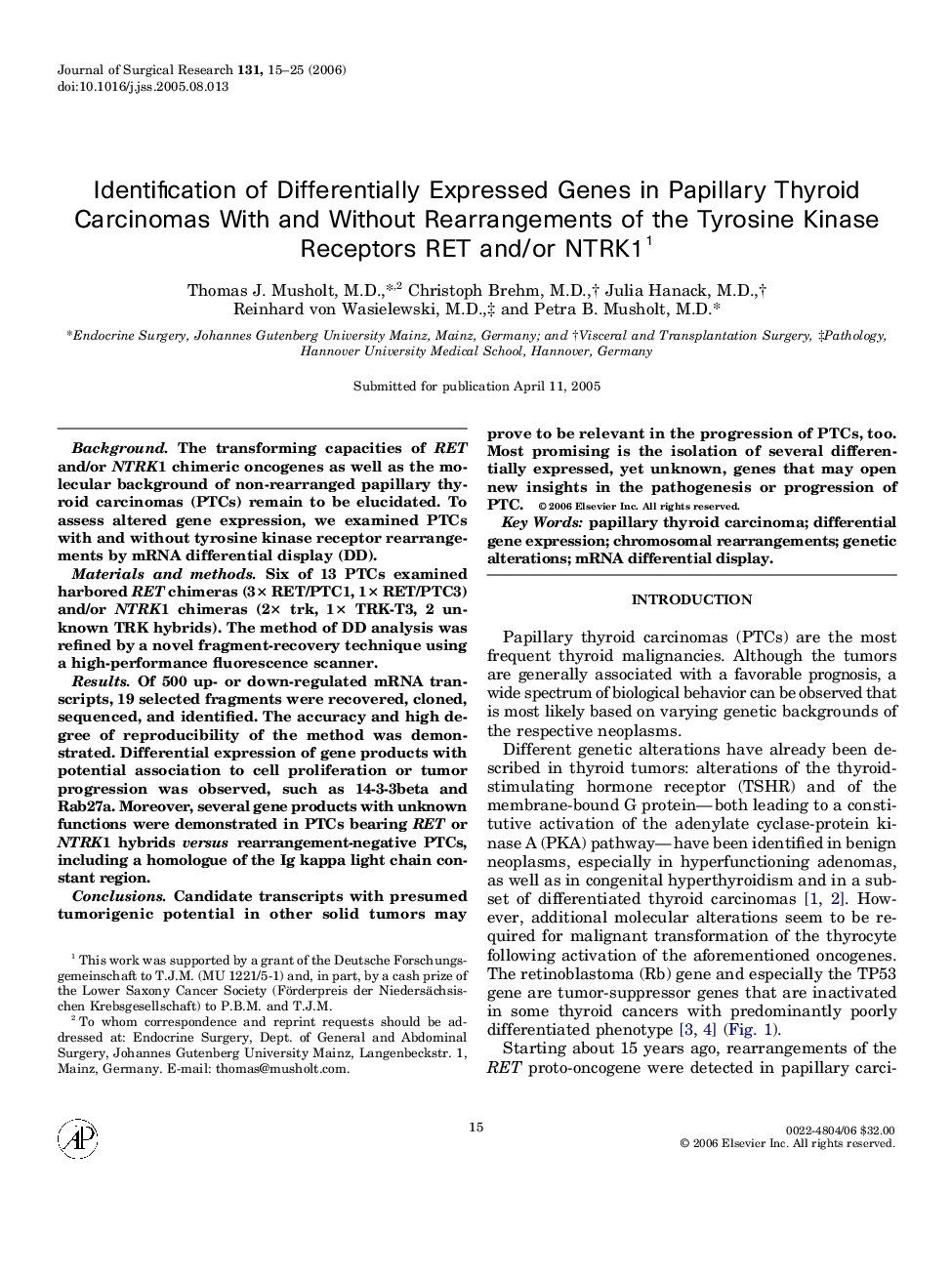| Article ID | Journal | Published Year | Pages | File Type |
|---|---|---|---|---|
| 4305052 | Journal of Surgical Research | 2006 | 11 Pages |
BackgroundThe transforming capacities of RET and/or NTRK1 chimeric oncogenes as well as the molecular background of non-rearranged papillary thyroid carcinomas (PTCs) remain to be elucidated. To assess altered gene expression, we examined PTCs with and without tyrosine kinase receptor rearrangements by mRNA differential display (DD).Materials and methodsSix of 13 PTCs examined harbored RET chimeras (3× RET/PTC1, 1× RET/PTC3) and/or NTRK1 chimeras (2× trk, 1× TRK-T3, 2 unknown TRK hybrids). The method of DD analysis was refined by a novel fragment-recovery technique using a high-performance fluorescence scanner.ResultsOf 500 up- or down-regulated mRNA transcripts, 19 selected fragments were recovered, cloned, sequenced, and identified. The accuracy and high degree of reproducibility of the method was demonstrated. Differential expression of gene products with potential association to cell proliferation or tumor progression was observed, such as 14-3-3beta and Rab27a. Moreover, several gene products with unknown functions were demonstrated in PTCs bearing RET or NTRK1 hybrids versus rearrangement-negative PTCs, including a homologue of the Ig kappa light chain constant region.ConclusionsCandidate transcripts with presumed tumorigenic potential in other solid tumors may prove to be relevant in the progression of PTCs, too. Most promising is the isolation of several differentially expressed, yet unknown, genes that may open new insights in the pathogenesis or progression of PTC.
